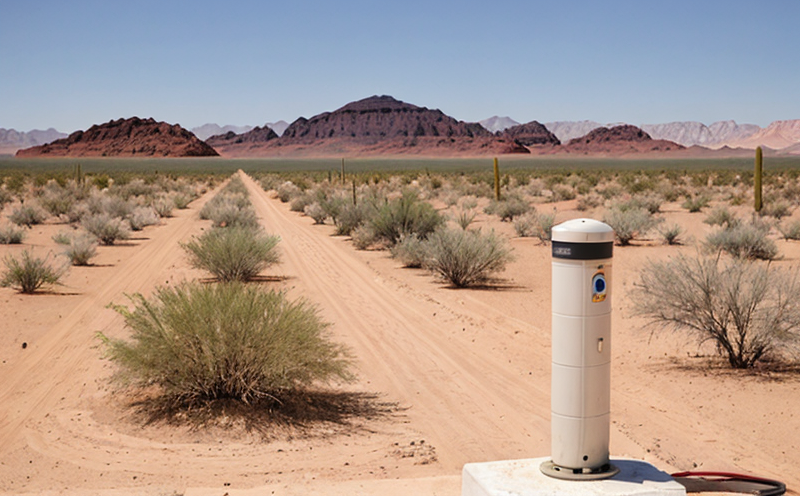Measuring heat dissipation efficiency in outdoor and extreme environments, such as high heat and desert conditions.
Measuring Heat Dissipation Efficiency in Extreme Environments A Crucial Service for Businesses
In todays fast-paced world, businesses are constantly pushing the boundaries of innovation and performance. As a result, products and systems are being subjected to increasingly demanding conditions, including extreme temperatures and environments. This is particularly true for industries such as automotive, aerospace, electronics, and energy, where heat dissipation efficiency plays a critical role in ensuring product reliability, safety, and longevity.
What is Heat Dissipation Efficiency?
Heat dissipation efficiency refers to the ability of a system or component to effectively manage and dissipate heat generated during operation. In extreme environments, such as high-heat and desert conditions, this can be particularly challenging due to factors like intense sunlight, high temperatures, and limited air flow.
Why is Measuring Heat Dissipation Efficiency Essential for Businesses?
Incorporating heat dissipation efficiency testing into your product development cycle can have a significant impact on your business. Here are just a few reasons why
Improved Product Reliability By understanding how your product performs in extreme environments, you can identify potential reliability issues before they become major problems.
Enhanced Safety Heat-related failures can lead to catastrophic consequences, including injuries and even fatalities. Measuring heat dissipation efficiency helps ensure that your products are safe for users.
Increased Performance Efficient heat management enables optimal system performance, which is essential in industries like automotive and aerospace where every fraction of a second counts.
Reduced Maintenance Costs By identifying potential heat-related issues early on, you can reduce maintenance costs and minimize downtime.
Key Benefits of Measuring Heat Dissipation Efficiency
Here are some key benefits of incorporating heat dissipation efficiency testing into your product development cycle
Accurate Predictions Our laboratory services provide accurate predictions of how your products will perform in extreme environments.
Data-Driven Decision Making With our comprehensive reports, youll have the data-driven insights needed to make informed decisions about product design and optimization.
Competitive Advantage By understanding how your products compare to industry benchmarks, you can identify areas for improvement and gain a competitive edge.
How Does Eurolabs Laboratory Service Measure Heat Dissipation Efficiency?
At Eurolab, our team of experts employs state-of-the-art equipment and methodologies to measure heat dissipation efficiency in extreme environments. Our services include
High-Temperature Testing We subject your products to temperatures up to 200C (392F) using advanced thermal chambers.
Heat Transfer Analysis Our expert engineers analyze data from our testing protocols to provide a comprehensive understanding of heat transfer mechanisms.
Air Flow and Convection Testing We evaluate how air flow and convection affect heat dissipation in your products.
QA Measuring Heat Dissipation Efficiency with Eurolab
Here are some frequently asked questions about measuring heat dissipation efficiency
What types of products can benefit from heat dissipation efficiency testing?
Automotive components, such as engines, batteries, and electronic controls.
Aerospace components, including electronic systems, propulsion systems, and thermal protection systems.
Electronic devices, like smartphones, laptops, and servers.
How long does a typical test take?
The duration of our tests varies depending on the specific requirements of your product and testing protocol.
What kind of data can I expect from Eurolabs laboratory services?
Our comprehensive reports include temperature profiles, heat transfer rates, and analysis of air flow and convection effects.
Conclusion
Measuring heat dissipation efficiency is a crucial aspect of product development, particularly in extreme environments like high-heat and desert conditions. By partnering with Eurolab, youll gain access to state-of-the-art laboratory services and expert engineering support. Our team will help you optimize your products for performance, reliability, and safety ensuring that you stay ahead of the competition.
At Eurolab, were committed to helping businesses succeed in even the most demanding conditions. Contact us today to learn more about our heat dissipation efficiency testing services and discover how we can support your product development needs.
-
Measuring the ability of lighting devices to dissipate heat during operation.
-
Testing how effectively lighting fixtures maintain safe operating temperatures.
-
Evaluating the thermal management system in lighting devices, including heat sinks and cooling methods.
-
Testing for temperature rise in LEDs, bulbs, and other lighting devices under various load conditions.
-
Verifying the heat dissipation performance of different types of lighting (e.g., LED, fluorescent, halogen).
-
Ensuring that lighting devices maintain optimal performance without overheating.
-
Measuring surface temperature and internal temperature to assess thermal stability.
-
Testing the temperature effects on the lifespan and performance of lighting devices.
-
Assessing the efficiency of heat dissipation mechanisms in smart lighting products.
-
Verifying that lighting devices meet thermal performance standards for safety (e.g., UL, CE).
-
Testing for overheating protection mechanisms, such as thermal cutoffs or self-regulation.
-
Evaluating the impact of environmental factors like humidity and airflow on heat dissipation.
-
Testing heat dissipation under continuous usage and during short-term high-intensity operation.
-
Assessing how heat dissipation impacts the overall energy efficiency of lighting devices.
-
Testing how varying voltage levels affect heat generation and dissipation in lighting devices.
-
Testing for the risk of heat-related damage to surrounding objects, structures, or surfaces.
-
Ensuring that lighting devices are safe for use in enclosed spaces or where heat build-up is a concern.
-
Verifying that heat dissipation does not result in excess noise or vibration in lighting devices.
-
Assessing the impact of heat management on the overall design and aesthetics of lighting systems.
-
Testing for the longevity of thermal management components over the operational life of the device.
-
Testing heat dissipation in combination with other environmental stressors, like vibration or water exposure.




